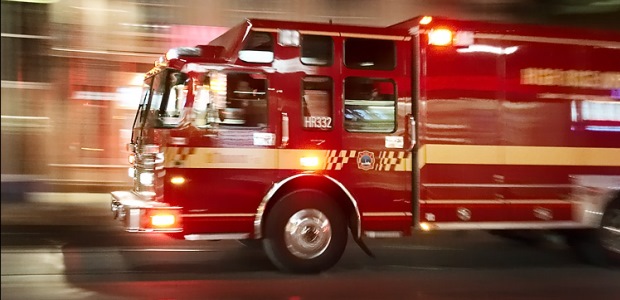
Updating the NORA Public Safety Agenda
Cardiovascular disease, cancer, and chronic diseases are the first recommendation because stress is such a big factor affecting public safety workers' health.
- By Jerry Laws
- Jul 01, 2018
NIOSH published a newly updated National Occupational Research Agenda for Public Safety in the Federal Register on April 12, 2018, asking for public and stakeholder comments on it by June 11. "The purpose of public comment is to gather input from stakeholders who are not on the Public Safety Sector Council. Since this is a research agenda for the nation, we want as broad input as possible," the agency's leaders on this initiative noted in an email announcing it.
The names included in the email were Maryann D'Alessandro, Ph.D., Public Safety Program Manager; Bill Haskell, M.S., Public Safety Co-Coordinator and NORA Council Co-Chair; Dr. Jeffrey Burgess, M.D., NORA Council Co-chair; Corey Butler, M.S., Public Safety Co-Coordinator; and Andrew Palmiero, M.S., Public Safety Assistant Coordinator.
A product of the NORA Public Safety Sector Council, this agenda lists eight recommendations:
- Reduce cardiovascular disease, cancer, and other chronic diseases
- Reduce infectious disease transmission
- Reduce musculoskeletal disorders
- Reduce motor vehicle injuries
- Reduce workplace violence
- Promote healthy work design and well-being
- Increase surveillance
- Increase resilience and preparedness
The agenda explains why each of these is important. For musculoskeletal disorders, for example, it explains that they are often the most commonly reported work-related injuries among public safety workers. EMTs and paramedics reported the highest incidence of MSDs, at 184 per 10,000 full-time workers, and firefighters reported a rate of 179 per 10,000 full-time workers, according to BLS data cited in the agenda.
Cardiovascular disease, cancer, and chronic diseases are the first recommendation because stress is such a big factor affecting public safety workers' health, it says. Sudden cardiac events are responsible for 7 to 22 percent of on-duty deaths among police officers, 17 percent among wildland firefighters, and 11 percent among EMS workers, it says.
Early Comments Supportive
Only a handful of comments were posted to the public docket (CDC-2018-0033) at www.regulations.gov by mid-May. All were supportive of the document.
One commenter submitted this: "I sincerely appreciate the opportunity to review the NORA Council Public Safety research agenda. Perhaps it's anecdotal but as a retired State Trooper I've observed a number of former Troopers contracting brain tumors leading to early death. While I don't know about specific rates of brain cancer across all disciplines of Public Safety, it is curious to observe this. Particularly as I make a comparison to the general population (non-public safety people) that I know of with brain tumors. Based on an understanding of some of the technologies used by LE (such as radar for speed detection), as well as exposures to various environmental hazards and hazardous materials, and this unscientific observation of what appears to be a high rate of brain cancers in former State Troopers (in my estimation anyway), it appears to be of some consequence. Hence I am very pleased to see the research agenda include cancer related research associated with public safety employees in general. Thank you and please continue your efforts to protect those who protect us."
Another wrote, "The NORA Public Safety Agenda is a well crafted, well researched and comprehensive plan for addressing the most important health hazards faced by this important sector. I applaud the work that NIOSH has done," while a third commenter recommended adding material to the document about "how shift length, lack of sleep, interrupted sleep and fatigue impacts cardiovascular disease, cancer, and other chronic diseases under objective 1." This commenter cited a study titled "Exploratory Study of Heart Rate Variability and Sleep among Emergency Medical Services Shift Workers," available at https://www.ncbi.nlm.nih.gov/pubmed/27487176, saying it "provides some evidence for the impact of interrupted sleep on cardiovascular health."
This article originally appeared in the July 2018 issue of Occupational Health & Safety.
About the Author
Jerry Laws is Editor of Occupational Health & Safety magazine, which is owned by 1105 Media Inc.